5 Steps for Handling Contaminated Linens Safely
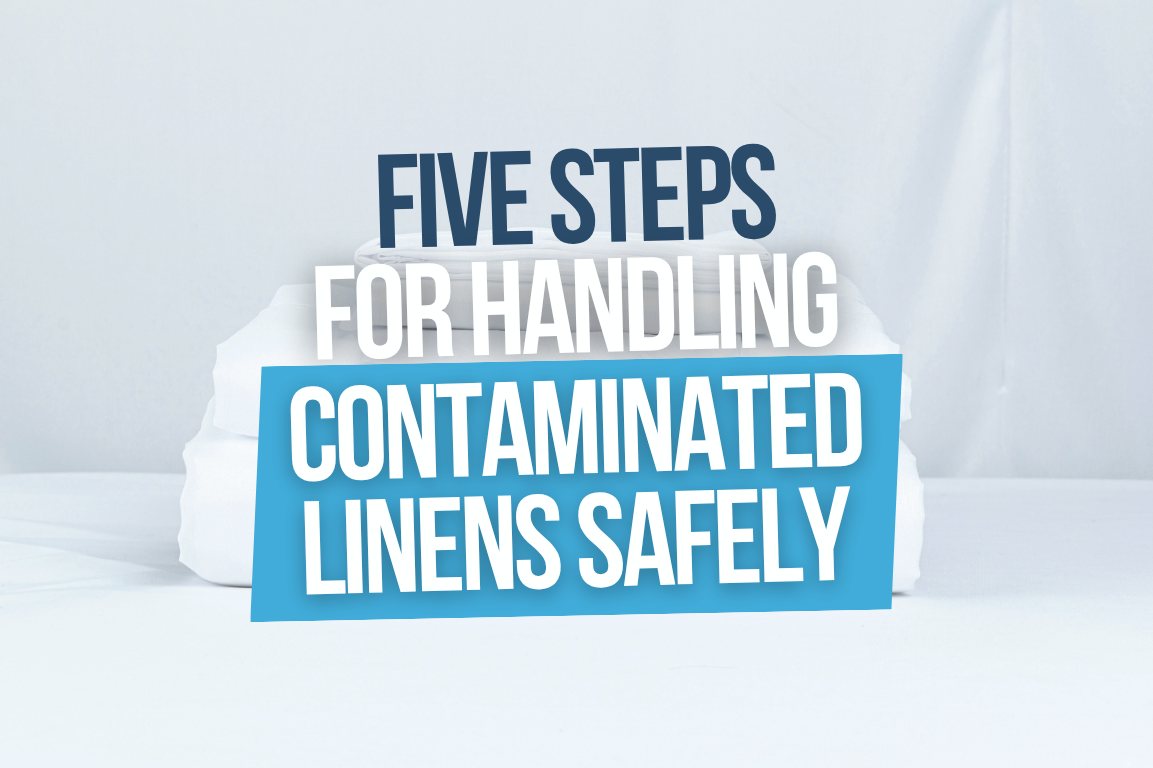
Handling contaminated linens is a daily task in caregiving, but improper practices can spread harmful microorganisms, putting both caregivers and patients at risk. To minimize health hazards and maintain hygiene, follow these five steps:
- Wear PPE: Use gloves, gowns, and face shields to protect yourself from exposure to pathogens. Wash hands before and after handling linens.
- Handle Linens Carefully: Avoid shaking linens to prevent airborne contamination. Roll them inward and use waterproof bags to contain soiled fabrics.
- Store and Label Properly: Keep contaminated linens in designated storage areas, separate from clean ones. Use color-coded bags and clear labels for identification.
- Wash or Dispose Correctly: Wash linens in hot water with disinfectants or dispose of heavily soiled items per local medical waste guidelines.
- Consider PeelAways: Disposable bed sheets with multiple layers simplify linen management, reducing contamination risks and saving time.
The 6C's: Handling Soiled Healthcare Linen in a Healthcare Environment Trailer
Step 1: Put on Personal Protective Equipment (PPE)
Before handling any soiled linen, it's critical to wear the right protective gear. This isn't just a suggestion - it's what stands between you and harmful pathogens that could be hiding in contaminated fabrics.
Required PPE for Linen Handling
The type of protective equipment you’ll need depends on the task at hand. Here’s what safety experts and healthcare professionals recommend:
- Gloves are a must for handling all soiled linens, such as bed sheets, towels, and curtains [1]. Opt for tear-resistant rubber gloves to reduce the risk of injuries from sharp objects [1][2][3]. Consult safety personnel or industrial hygienists to ensure you’re using gloves suited to your specific needs [3].
- Gowns or aprons are essential when dealing with heavy soiling or hand-washing linens [1]. These protective garments are especially important for anyone sorting through contaminated fabrics [3].
- Face shields or goggles should be worn whenever there’s a risk of splashes during linen handling or laundering [1]. These protect your face and eyes from infectious droplets.
Everyone handling soiled linens must wear appropriate PPE [2]. If you have any cuts, scrapes, or lesions on exposed skin, cover them with waterproof plasters before putting on your gear [2].
Finally, hygiene is key. Make sure to wash your hands thoroughly both before putting on your PPE and after taking it off.
Hand Washing Before and After
Proper handwashing is a vital part of maintaining hygiene during linen handling. Since hands are a common way germs spread, you need to wash them both before donning PPE and after removing it.
- Wash your hands before putting on PPE. This step ensures you’re not transferring germs from your hands to the inside of your gloves or other protective gear [6]. It’s a simple way to prevent contamination that could affect patients or the environment.
Soiled linens can carry pathogens like MRSA, VRE, Clostridium difficile, Salmonella, Bacillus cereus, hepatitis B virus, and various fungi [3][4].
- Handwashing after removing PPE is equally critical. Even high-quality gloves can have tiny, invisible tears, and contamination can happen during removal [6]. Washing your hands afterward removes any infectious material that may have bypassed your protective barriers, reducing the risk of spreading germs [5][6]. Ensure handwashing facilities are readily available wherever soiled linen is handled [2].
Step 2: Collect and Handle Linens Safely
Handling soiled linens the right way is essential to prevent contamination. Always treat every piece of soiled linen as though it could be infectious, and take care to manage it without spreading contaminants.
Avoid Shaking or Fluffing Soiled Linens
Never shake or fluff soiled linens, as this can release pathogens into the air. Instead, roll the linens inward from the edges to trap any contaminants inside.
When removing linens from a bed, take a systematic approach. Start at one corner and carefully gather the fabric, moving slowly to minimize any air disturbance. Be especially cautious with linens that are heavily soiled to avoid spreading contaminants.
Use the Right Bags and Containers
Using proper containment is key to preventing leaks, odors, and contamination. Waterproof bags are ideal for linens that may be damp or contain bodily fluids, as they prevent seepage that could contaminate surfaces or create hazards like slips. Choose sturdy bags that can handle the weight of wet linens without tearing, and make sure they seal tightly to control odors and prevent spills during transport.
For items that are heavily contaminated, double-bagging is a smart option. Place the linens in a first bag, seal it securely, and then place that bag into a second waterproof bag for added protection against leaks.
To avoid overloading, fill bags to no more than 75% of their capacity. This leaves enough space to twist and seal them securely, reducing the risk of bag failure, especially with heavy, wet linens.
If the bags need to be stored before washing or disposal, place them in designated containers with tight-fitting lids. These containers should be easy to clean and disinfect and should be located in areas where they won’t be accidentally knocked over or accessed by unauthorized individuals.
Step 3: Store and Label Contaminated Linens
After safely collecting contaminated linens, the next step is to ensure they are stored and labeled properly. This helps maintain a safe environment and minimizes the risk of contamination. Once bagged, contaminated linens should be securely stored to prevent any accidental exposure.
Set Up Secure Storage Areas
Having a designated storage area for contaminated linens is a critical part of infection control. This space must be completely separate from where clean linens are kept to eliminate any risk of cross-contamination[7][3].
The storage area should be lockable and accessible only to authorized personnel. This ensures that only trained staff handle the materials, reducing the chances of accidental exposure. The area must also have impermeable surfaces that can be easily cleaned and disinfected. Proper ventilation is equally important to manage odors and any airborne particles effectively[7][8].
Use containers with tight-fitting lids that are easy to clean and disinfect. Place these containers in locations where they won’t be accidentally tipped over or accessed by unauthorized individuals.
To avoid buildup, schedule regular pickups of contaminated linens. Many healthcare facilities arrange for daily or twice-daily pickups, depending on the volume. Allowing linens to sit for too long increases the likelihood of bag failure, unpleasant odors, and accidental exposure incidents[7].
It’s also essential to clean and disinfect the storage area regularly using approved cleaning agents. Any spills or leaks should be addressed immediately, and all cleaning activities should be documented to comply with infection control standards[7][8].
The final step in this process is to clearly label each linen bag to ensure proper handling and tracking.
Label and Color-Code Linen Bags
A clear labeling system is essential to prevent dangerous mix-ups. All contaminated linen bags should be labeled and color-coded for easy identification[3][7]. This allows staff to recognize the level of contamination immediately and take the necessary precautions.
In many U.S. healthcare facilities, a standardized color-coding system is used: red bags for infectious or biohazardous linens, yellow for isolation linens, and clear or blue for general soiled linens. This system ensures that staff can quickly identify the type of contamination and follow the correct safety protocols[7][3].
Labels should include specific details for tracking and safety, such as the source location (e.g., room or ward), date of collection, and any relevant risk information like "infectious" or "biohazard"[7]. Some facilities also incorporate barcodes or tracking numbers to improve inventory management and traceability[7].
| Storage Practice | Purpose | Key Requirement |
|---|---|---|
| Lockable Storage Area | Prevents unauthorized access | Separated from clean linens[7][9] |
| Color-Coded Bags | Immediate contamination identification | Red for infectious, yellow for isolation[7][3] |
| Clear Labeling | Tracking and safety information | Source location, date, risk level[7] |
| Regular Pickup Schedule | Prevents contaminated buildup | Daily or twice-daily removal[7] |
While healthcare facilities are increasingly adopting automated solutions to improve safety and efficiency, the basic principles of secure storage and clear labeling continue to be essential for effective infection control[8].
sbb-itb-45288fe
Step 4: Wash or Dispose of Contaminated Linens
Once contaminated linens are properly stored and labeled, the next step is deciding whether to wash them or discard them. This choice impacts both safety and operational costs.
Hot Water Washing Instructions
After securing and labeling the linens, the cleaning process begins. Wash the linens using the highest water temperature recommended for the fabric. Refer to the manufacturer's or facility's guidelines to ensure safe handling. High temperatures are crucial for reducing bacteria, viruses, and other harmful microorganisms.
Start by sorting the linens based on their level of contamination and fabric type. Avoid overloading the washing machine to allow for proper agitation and thorough cleaning. Use a detergent specifically designed for medical or heavily soiled laundry. When necessary, include a disinfectant - such as chlorine or oxygen-based bleach - and follow the product's usage instructions carefully.
Run a full wash cycle to ensure the disinfectant has enough time to work effectively. For heavily soiled items, pre-rinse them to remove excess debris before the main wash.
Once washed, dry the linens at a high heat setting if the fabric allows. This step provides an added layer of protection by further reducing any lingering pathogens. Always wash contaminated linens separately from other laundry to minimize the risk of cross-contamination.
If washing fails to restore the linen's condition or integrity, proceed with disposal.
When to Throw Away Linens
Linens that are too damaged or heavily soiled to be cleaned safely should be discarded. Items with tears, permanent stains, or contamination levels beyond what cleaning can address are better off being disposed of. This is especially true for linens exposed to high-risk pathogens, which require disposal according to facility protocols.
If the cost or effort of cleaning outweighs the benefits, disposal is the safer option. Follow local medical waste regulations when discarding linens. This typically involves securely bagging them in designated biohazard containers and maintaining proper records for compliance and inventory purposes.
Safety should always come first. If there’s any uncertainty about whether the cleaning process was effective, it’s best to err on the side of caution and dispose of the linens to prevent any risk of spreading contamination.
Step 5: Use PeelAways for Easier Linen Management
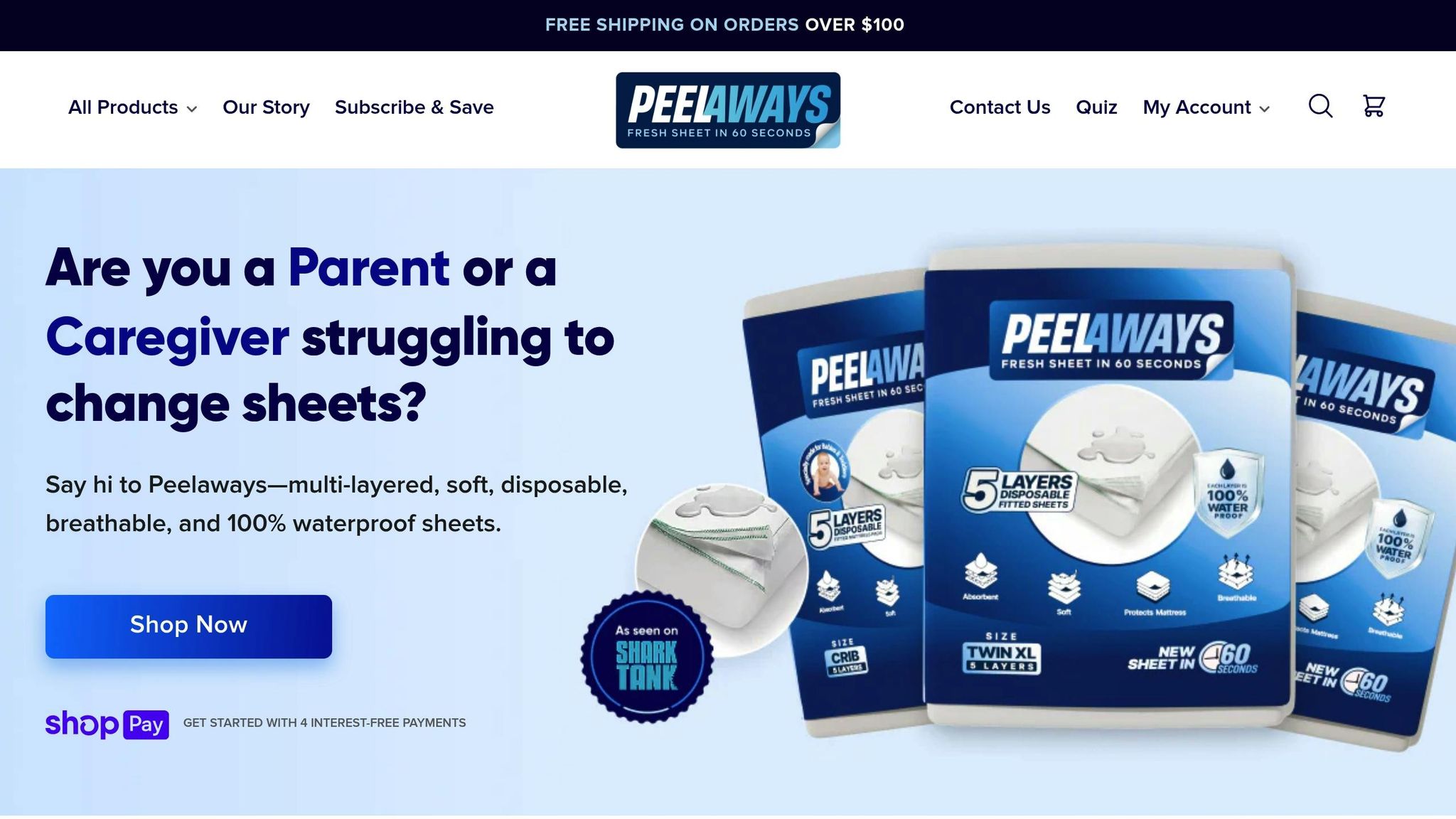
Managing linens can feel like a never-ending chore, especially in healthcare settings or at home with young children or elderly family members. PeelAways disposable bed sheets simplify this process by cutting down the steps, reducing contamination risks, and offering a more practical solution for handling soiled bedding.
How PeelAways Work
PeelAways are designed with a patented multi-layer system that includes 5 to 7 soft, absorbent layers, depending on the size of the bed. When one layer becomes soiled, you simply peel it away to reveal a fresh, clean sheet underneath. The best part? No lifting mattresses, no laundry, and no risk of cross-contamination.
Each layer is waterproof and stays securely in place until it's removed. Twin XL and Cot sizes come with 7 layers, making them perfect for extended use, while standard sizes - Twin, Full, Queen, and King - offer 5 layers each.
For parents of toddlers, the Crib-A-Peel is a game-changer. With 5 layers specifically made for cribs, it makes potty training and nighttime accidents far less stressful. Forget the endless cycle of washing and sanitizing - just peel away the mess and move on.
Why PeelAways Make Caregiving Easier
PeelAways take the hassle out of linen management. Instead of collecting, labeling, and washing contaminated sheets, caregivers can quickly strip away the soiled layer and replace it in seconds. This saves time and energy, especially in situations where frequent bedding changes are required, such as elder care or medical recovery.
For healthcare workers, this means more time to focus on patient care rather than dealing with laundry or worrying about lingering pathogens that might survive traditional washing methods. The disposable nature of PeelAways ensures a clean, hygienic solution every time.
Made from non-chemical materials, these sheets are gentle on sensitive skin. Plus, compostable and biodegradable options are available for those who want an eco-friendly choice without compromising on safety.
PeelAways also offer a practical, cost-saving advantage. By cutting down on labor and cleaning expenses, they provide a budget-friendly option for families and healthcare facilities alike. Whether you're caring for an elderly relative at home, managing a child with special needs, or recovering from a temporary medical condition, PeelAways make life a little easier.
Conclusion: 5 Steps to Handle Contaminated Linens Safely
Managing contaminated linens properly is essential to prevent cross-contamination and protect both caregivers and patients. Here are five steps to establish a solid defense:
- Wear proper PPE: Personal protective equipment acts as the first line of defense against harmful pathogens. Combined with hand hygiene, it creates a strong barrier.
- Handle linens carefully: Gentle handling reduces the risk of airborne contamination and limits the spread of infectious agents.
- Store linens securely: Proper storage ensures that contaminated fabrics are contained and do not pose further risks.
- Wash or dispose of linens correctly: Hot water washing effectively destroys pathogens, while proper disposal prevents additional exposure.
- Consider PeelAways: These disposable bed sheets eliminate the need for direct handling of contaminated fabrics, significantly lowering cross-contamination risks.
Research highlights the importance of these practices. Proper linen handling has been shown to reduce healthcare-associated infections [3]. On the flip side, facilities that overlook these steps often face outbreaks tied to poor linen management [8].
Approximately 15% of healthcare waste is hazardous, with the potential to be infectious, toxic, or even radioactive [8]. This statistic emphasizes why following these steps consistently is crucial. By integrating these methods, healthcare workers help create a safer environment, ensuring better protection for everyone involved.
FAQs
What are the risks of handling contaminated linens in healthcare settings?
Handling contaminated linens in healthcare settings comes with serious health risks, including the potential spread of harmful pathogens like bacteria, viruses, and fungi. These microorganisms can lead to healthcare-associated infections (HAIs), particularly when proper precautions - like wearing gloves and using protective equipment - are overlooked.
When soiled linens are mishandled, the risk of cross-contamination increases significantly, potentially endangering both healthcare workers and patients. Contaminated linens often contain biological residues, such as bodily fluids or traces of medications, which can heighten the likelihood of infection if not managed properly. To maintain safety in these environments, it’s crucial to follow strict handling and disposal protocols.
How do PeelAways disposable bed sheets help prevent contamination compared to traditional linens?
PeelAways disposable bed sheets offer a practical way to cut down on contamination risks by removing the need for traditional laundering. These sheets are designed with a multi-layer, peel-away system, so you can simply peel off a soiled layer to reveal a fresh, clean surface beneath. This straightforward approach helps reduce the likelihood of cross-contamination and infection.
Unlike regular linens, PeelAways sheets eliminate the need for washing, limiting your contact with germs and bacteria. With waterproof and absorbent layers, they provide both hygiene and ease of use, making them a smart option for caregivers, medical staff, and families dealing with elder care, recovery, or potty training.
How do I decide whether to wash or dispose of heavily soiled linens?
When managing heavily soiled linens, it’s important to assess the type and level of contamination. Linens stained with bodily fluids or infectious materials require careful handling and proper infection control measures. This means wearing disposable gloves, handling the items cautiously to prevent spreading contaminants, and washing them at high temperatures to ensure they’re disinfected thoroughly.
In cases where linens can’t be adequately cleaned or may risk spreading infection, disposal might be the safest route. To reduce health risks, always store soiled linens in a secure, designated area before laundering or discarding them. For an easier alternative, Peelaways disposable bed sheets offer a convenient solution - just peel away the used layer to reveal a fresh, clean one, eliminating the need for washing entirely.
Related Blog Posts
- Bedding Care Checklist for Healthcare Facilities
- Disposable vs. Washable Bed Sheets: Comparison
- Checklist for Infection Control in Shared Living Spaces
- How Disposable Sheets Reduce Cross-Contamination
Comments
0

SAVE MONEY & WATER
Professionals & Institutions save a fortune on labor/laundry.
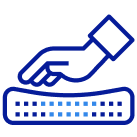
SUPERIOR COMFORT
The first thing our customers notice is how soft our sheets are.
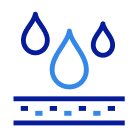
100% WATERPROOF
Each layer is 100% Waterproof, perfect for spills and accidents

SAVE TIME
Change the sheet in under 1 minute without stripping the bed.
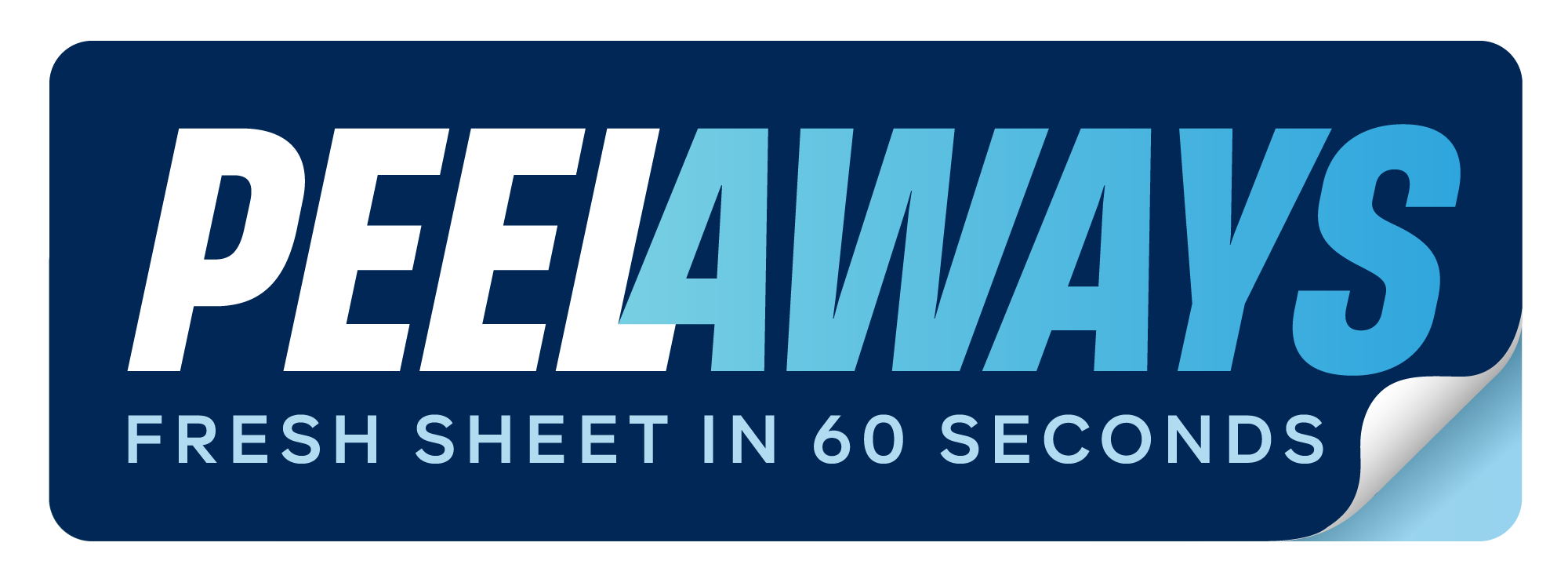



Leave a comment